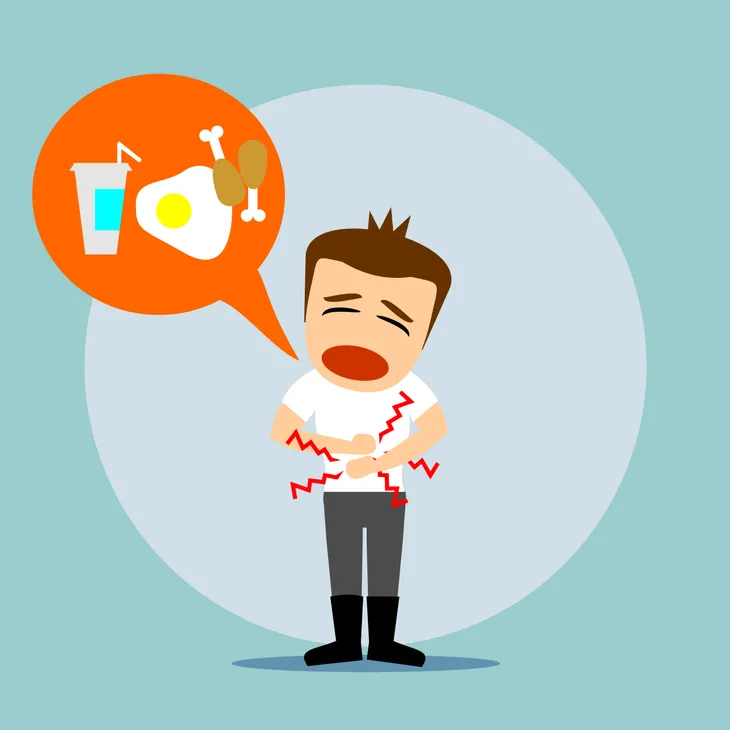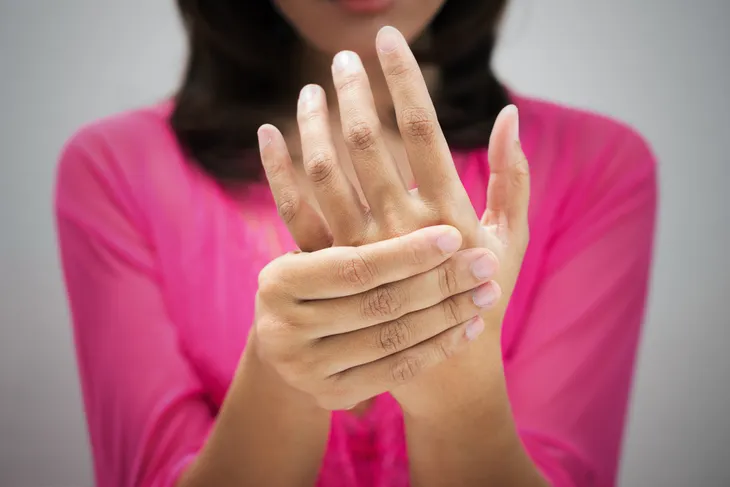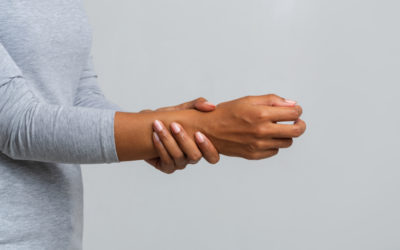While diabetes is very prevalent in the U.S.—the American Diabetes Association claims more than 9-percent of the population was diagnosed with the disease as of 2012—there are warning signs you can watch for.
“Prediabetes,” as it’s known, is when your fasting blood glucose levels are elevated but not yet at the point where full-blown diabetes can be diagnosed. According to the association, in 2012 prediabetes was found in 86 million Americans over the age of 20. This is a significant jump from 79 million just 2-years prior. Here are 12 common signs of prediabetes that aren’t so sweet, but can be turned around with the right measures…
Want diabetes content delivered straight to your inbox? Sign up for our Diabetes newsletter and receive exclusive news and articles written from our team of diabetes experts.
Darkened Skin
The Mayo Clinic said that while prediabetes doesn’t always have obvious signs, one possible risk factor for type 2 diabetes is darkened patches of skin on the neck and joints. This condition is referred to as acanthosis nigricans.
The clinic said the darkened skin can also become thicker than normal. In some cases, this condition can also be a warning sign of a cancerous tumor of an internal organ, so have your doctor check you out either way.
Lack of Exercise
Lack of physical activity is generally bad for us overall and can also lead to mental illnesses such as depression. Prevention notes that, while 1 in 3 Americans have prediabetes, a change in diet can do wonders. The sugar-filled foods you eat can eventually become more resistant to the hormone that regulates glucose in the body that is secreted by your pancreas. Meaning it can tap out and not control your blood sugar at a certain point.
However, while diet helps control your blood sugar, Prevention says that a study in Finland showed subjects who exercised regularly dropped their risk of diabetes by as much as 70-percent compared to inactive subjects. The article suggests interval training (low-intensity exercise with some high-impact moves mixed in) is best for glucose (blood sugar) control.
Lack of Sleep
While fatigue is sometimes a symptom of prediabetes, those who get less than 6-hours of sleep each night are at a higher risk for prediabetes, notes Best Health.
The theory is that there’s a connection between lack of sleep, hormones, and your nervous system that creates the perfect storm for the beginnings of diabetes. So, for starters, try to get more sleep at night by avoiding sugar or caffeine-filled treats near bedtime.
Blurred Vision
While it could just be a case of needing corrective lenses or that your eyes are tired, blurry vision can also be a sign of prediabetes, according to Shape magazine. The magazine noted that spikes in your blood sugar could actually impair eye function, especially focusing, which should go away once you’ve reduced your glucose levels.
Blurry vision can be a sign of other health problems such as glaucoma and even multiple sclerosis, and if the blurriness persists you should probably consult an eye doctor or your family doctor to be on the safe side.
Increased Thirst
While diabetics can have bouts of extreme thirst that can’t seem to be quenched, those with prediabetes can also feel the need to drink more water. This is because your body is fighting a battle against glucose and is trying to flush it out through urination, noted Shape magazine.
While this will lead to more frequent trips to the bathroom, you may end up dehydrated as a result and become thirsty again. Shape magazine, in another article, notes that the adequate intake level (AI) is just over half a U.S. gallon (2.2-liters) of water per day for women.
Slow-Healing Wounds
If you’ve got a bruise or a cut that seems to be taking its sweet time to heal, it could be a warning sign of prediabetes. This is because blood that is laced with glucose moves a bit slower throughout your body, meaning your body’s natural healing processes can be stunted.
Everyday Health also notes that certain infection-causing bacteria feed off sugar, so higher glucose in your bloodstream means more food for the infection. In other words, you’re literally feeding cuts and bruises when you snack on sugary items.
Unexplained Weight Loss
For some reason, we tend to associate blood sugar problems, such as diabetes, with being overweight, but that’s a common misconception. There are many people who have diabetes who are only moderately or not at all overweight.
In fact, according to the Mayo Clinic, people who are suffering from prediabetes might even start losing weight, because diabetes can stop the body from receiving the sugar in food. When the cells aren’t getting enough glucose, it can lead to weight loss. It can also cause people to go to the bathroom more frequently (which we will get to later), this means you’re getting rid of sugar and losing calories.
Always Hungry
Going off the topic of unexplained weight loss, Deena Adimoolam, MD, Assistant Professor of Medicine, Endocrinology, Diabetes and Bone Disease, Icahn School of Medicine at Mount Sinai told Best Health that it can also cause people to “feel hungry all the time” because they are losing calories and urinating more frequently.
Everyday Health writes, “People with type 2 diabetes have [hormone that regulates glucose in the blood] resistance, which means the body cannot use [this hormone] properly to help glucose get into the cells,” as well as muscle, fat, or other tissues. When this happens, the pancreas just puts out more of this hormone to compensate which causes high levels of it in the body. These high levels signal to the brain that the body is hungry.
Tingling and Numbness
If you’re experiencing tingling or numbness in the hands or feet it could also be a warning sign of prediabetes. This symptom occurs because “high blood sugar levels can affect blood circulation and damage the body’s nerves,” writes Medical News Today. This is a common occurrence for people with type 2 diabetes.
The source goes on to explain that this condition is called neuropathy, and it can worsen as the disease progresses. To avoid more serious complications, treatment is needed.
Frequent Yeast Infections
Yeast and bacteria are able to multiply at a faster rate when a person’s blood sugar levels are high, which is why women with diabetes are more likely to experience yeast infections. “Women with diabetes are overall at a higher risk of feminine health issues, such as bacterial infections, yeast infections, and vaginal thrush, especially when blood sugar isn’t well controlled,” writes Everyday Health. Of course, those with prediabetes who are unaware of their condition are likely to have blood sugar levels that are unmanaged. Women who are experiencing yeast infections on a regular basis might want to consider being checked for (pre)diabetes.
Men aren’t totally off the hook either. The source goes on to note that men and women with diabetes are also likely to suffer from foot infections, “because the disease can damage the architecture of the foot, including the skin, blood vessels, and nerves.” However, this is more likely in people with advanced diabetes.
Frequent Urination
Frequent urination is another early warning sign of diabetes because there is an excess of glucose in the blood and the kidneys are working hard to flush it out with urine, explains Everyday Health. “A patient may feel slightly more thirsty and have to urinate more over time as well as the sugars increase in their body,” says University of Pittsburgh Medical Center endocrinologist Jason Ng, MD, Clinical Assistant Professor of Medicine, when talking to Best Health magazine.
This increase in urination puts both men and women at risk for more frequent urinary tract infections (UTIs). In fact, Everyday Health says that people with type 2 diabetes are twice as likely to get a UTI than those without the disease. As always, women are even more at risk than men.
Family History
Since there is a genetic link behind diabetes, a family history of diabetes can be a precursor. “There can be a genetic cause for the development of type 2 diabetes due to certain gene mutations,” says Deena Adimoolam, MD, when talking to Best Health. “Some people may have a genetic predisposition to developing type 2 diabetes due to presence of certain genes than have been passed down from one generation to the next,” adds Dr. Adimoolam.
Best Health goes on to cite a European study that found a positive family history increased a person’s chance of having diabetes by 26-percent. The National Institute of Diabetes and Digestive and Kidney Diseases (NIDDK) also states that a close family member having type 2 diabetes increases a person’s risk of developing the disease. “Some data suggests that the risk of type 2 diabetes is five times higher in those with diabetes on both the maternal and paternal sides of the family,” says Dr. Adimoolam.















